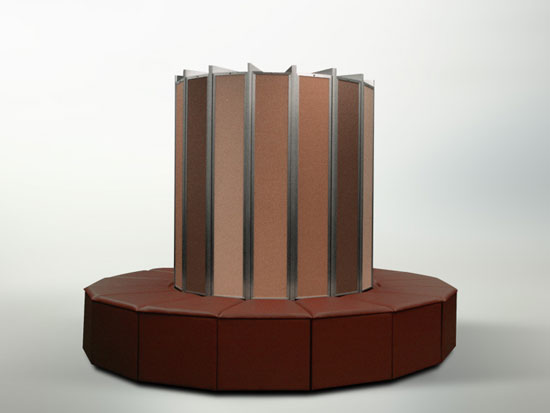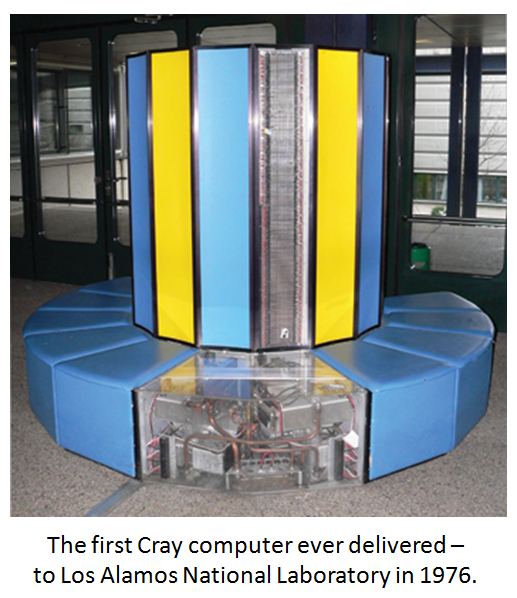Cray
by Andrew Boyd
Today, we go super. The University of Houston's College of Engineering presents this series about the machines that make our civilization run, and the people whose ingenuity created them.
In 1992, when I first set foot in the Zachry Engineering Center at Texas A&M, I was drawn to the centerpiece of its massive lobby. There, housed behind glass, were the distinctive lines of a Cray supercomputer. It stood as tall as a person and had a circular footprint about fifteen feet around.

Beginning in the mid seventies and lasting for well over a decade, the name Cray was synonymous with the world's fastest supercomputers. They were the brainchild of designer Seymour Cray. Cray had his first introduction to computer-like equipment doing work for the U.S. Navy following the Second World War. His interests led him to start Control Data Corporation, which quickly became known for its high performance computers. In time, the company would cease to focus on building high-end machines. But not Seymour Cray. By the early seventies, he left Control Data to start Cray Research.

Cray computers were faster than any of the competition, making them all the rage in research communities. And they were expensive, running into the tens of millions of dollars. If a national laboratory or university could cobble together enough money to buy one, it was faced with carefully managing time on the precious resource. Texas A&M, like many schools, built a special place to showcase its Cray and, by extension, the school's engineering prowess.
Cray computers used the latest component technology. But Seymour Cray's real genius was in knowing how to get the many parts working in unison. Moving data and instructions to and from a computer's brain — the CPU — is as important as how fast the CPU processes that information. Cray proved to be a master at putting it all together.
By the 1990s, the panache of owning a Cray was waning. A number of low-end supercomputer makers entered the market with competitive products at a fraction of the cost. And by the beginning of the twenty-first century, PCs were powerful enough to handle most scientific computing. By any measure, today's standard desktop computers are faster and more powerful than those old Crays. If you're willing to spend about a thousand dollars, it's possible to buy a PC that's almost a hundred times faster than a vintage Cray.
I last saw the Cray in the Zachry Engineering Center while working in my office late one evening. A moving company was breaking it apart and unceremoniously hauling it away on hand trucks. The irony was not lost. A multimillion dollar monument that surely arrived with great fanfare was being treated like well worn student furniture. But it was an oddly fitting end. With the arrival of a new era comes the passing of an old. And, less poetically, when your computer's out of date, it's time to get a new one.
I'm Andy Boyd at the University of Houston, where we're interested in the way inventive minds work.
Notes and references:
There are many ways to measure the speed of a computer, and there are many 'standard' microprocessors in use in desktop PCs. For the comparisons referenced in this essay, flops (floating point operations per second) were used as a measure of speed. In 1988, a high-end Cray Y-MP reached 2.3 gigaflops using a parallel array of processors individually running at about 1/7 that speed [Cray History, reference below]. As of May, 2012, a relatively low-end Intel Core Solo T1000 processor had a specified rate of 2.5 gigaflops. An Intel i7 3900 Extreme Edition with four processors had a specified rate of 187 gigaflops (Processors, referenced below).
The picture of the blue and yellow Cray 1 is from the website of Los Alamos National Laboratory. The other Cray 1 picture is publicly available from the website of the Cray Supercomputer Company.
This episode was first aired on September 6, 2012